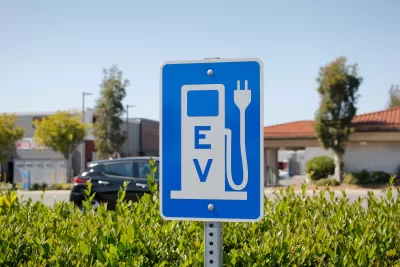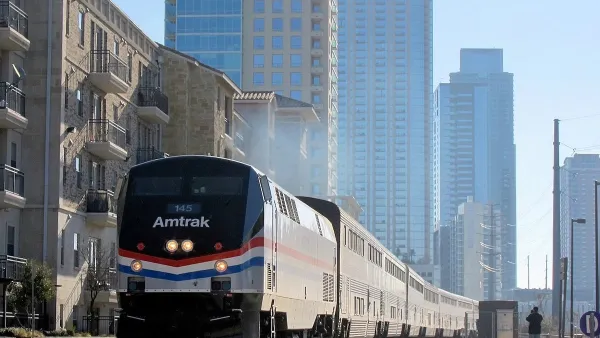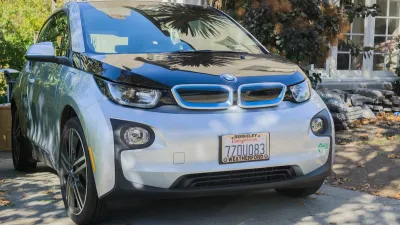U.S. and Canadian officials revealed plans for an electric vehicle charging network that will connect Kalamazoo and Quebec City with EV chargers every 50 miles.

At a press conference in Detroit on Tuesday, U.S. Transportation Secretary Pete Buttigieg, along with his Canadian counterpart, Michigan Gov. Gretchen Whitmer, and Detroit Mayor Mike Duggan announced plans for a 872-mile “binational electric vehicle corridor” that would feature EV fast chargers every 50 miles and pass through two major historic production centers for the car industry.
As Eric D. Lawrence, explains in Detroit Free Press, “Tying the corridor to current investments in electric vehicles pushed by the Biden administration, officials said the plan would boost domestic manufacturing, strengthen supply chains and provide good-paying jobs while supporting U.S. and Canadian climate and alternative energy transportation goals.”
The press conference did not reveal the timeframe for the project, which would stretch from Kalamazoo, Michigan to Quebec City. “Funding, at least in Michigan, is tied to $110 million being received through the National Electric Vehicle Infrastructure Program and the federal Bipartisan Infrastructure Law passed in 2021.”
FULL STORY: Buttigieg, Whitmer pitch EV corridor with Canada

Maui's Vacation Rental Debate Turns Ugly
Verbal attacks, misinformation campaigns and fistfights plague a high-stakes debate to convert thousands of vacation rentals into long-term housing.

Planetizen Federal Action Tracker
A weekly monitor of how Trump’s orders and actions are impacting planners and planning in America.

In Urban Planning, AI Prompting Could be the New Design Thinking
Creativity has long been key to great urban design. What if we see AI as our new creative partner?

King County Supportive Housing Program Offers Hope for Unhoused Residents
The county is taking a ‘Housing First’ approach that prioritizes getting people into housing, then offering wraparound supportive services.

Researchers Use AI to Get Clearer Picture of US Housing
Analysts are using artificial intelligence to supercharge their research by allowing them to comb through data faster. Though these AI tools can be error prone, they save time and housing researchers are optimistic about the future.

Making Shared Micromobility More Inclusive
Cities and shared mobility system operators can do more to include people with disabilities in planning and operations, per a new report.
Urban Design for Planners 1: Software Tools
This six-course series explores essential urban design concepts using open source software and equips planners with the tools they need to participate fully in the urban design process.
Planning for Universal Design
Learn the tools for implementing Universal Design in planning regulations.
planning NEXT
Appalachian Highlands Housing Partners
Mpact (founded as Rail~Volution)
City of Camden Redevelopment Agency
City of Astoria
City of Portland
City of Laramie





























